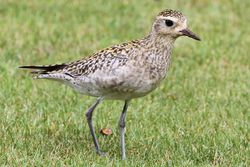
Waimea Valley in Haleiwa offers visitors and guests the opportunity to experience Hawaiian culture on a site stretching from the mountains to the sea. At the Valley you will encounter historical, cultural, botanical, and ecological wonders as you walk through the botanical gardens. Upon your visit to Waimea Valley you will receive a bird guide identifying over 20 birds you can watch. If you are lucky perhaps you will see the three mentioned below that are native to Hawaii. Look out for some of the beautiful birds below when you visit the historic site.
Birds to Look for at the Waimea Valley Historic Site
1. ‘Alae ‘Ula
The ‘alae ‘ula, or the Hawaiian Moorhen, is an endangered species with only about 500 birds left in the state. Waimea Valley historic site is home to about 13 of them with the population consistently growing thanks to the conservation efforts there. These small water birds are not found anywhere else in the world. The adults are black with a white stripe on their flanks and a red and yellow face shield.  According to legend, the ‘alae ‘ula knew the secret of making fire but refused to share it with Māui, the great Hawaiian demi-god. Māui caught the bird and demanded to be told the secret, but the ‘alae ‘ula lied. Realizing her trick, Māui tightened his grip until she finally revealed how to rub two sticks together and create fire. As punishment for lying, Māui branded her forehead with a burning stick, giving the ‘alae ‘ula its distinctive red shield.
According to legend, the ‘alae ‘ula knew the secret of making fire but refused to share it with Māui, the great Hawaiian demi-god. Māui caught the bird and demanded to be told the secret, but the ‘alae ‘ula lied. Realizing her trick, Māui tightened his grip until she finally revealed how to rub two sticks together and create fire. As punishment for lying, Māui branded her forehead with a burning stick, giving the ‘alae ‘ula its distinctive red shield.
2. ‘Auku ‘u
The ‘Auku‘u (black crowned night heron) are predatory birds native to Hawaii. The black crown bird with white throat and cheeks, stout black bill, and yellow feet and legs have red eyes. They are gregarious and are most active during the day. The ‘auku‘u can be seen in Kamanaui Stream along Hale Ho’ike below the bamboo groves preying on insects, fish, and frogs.
3. Kōlea
The kōlea, Pacific Golden-Plover, visits Hawaii every year from nesting grounds in Alaska. They travel non-stop from Alaska to Hawaii; the trip usually takes them around 50 hours.  They arrive in late summer or early fall and stick around until late spring the following year. During this time, they are seen all over the place, one of the few native birds commonly found. These birds are a mottled black, white, and yellow when they arrive. The males get a black patch on their chests in the spring before flying back north.
They arrive in late summer or early fall and stick around until late spring the following year. During this time, they are seen all over the place, one of the few native birds commonly found. These birds are a mottled black, white, and yellow when they arrive. The males get a black patch on their chests in the spring before flying back north.
If you’re looking for memorable experiences on Oahu, a trip to Waimea Valley should be at the top of the list. The historic site has a lot to offer for the whole family, from bird watching to traditional Hawaiian games. Learn more about their forest restoration and conservation efforts waimeavalley.net, and call (808) 638-7766 to plan your visit today.
About the Business
Have a question? Ask the experts!
Send your question

